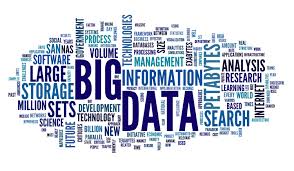What is Big Data ?
What is Big Data ?
Wikipedia defines “Big Data” as a collection of data sets so large and complex that it becomes difficult to process using on-hand database management tools or traditional data processing applications.
OR
In Simple words , Big data is an evolving term that describes any voluminous amount of structured, semi-structured and unstructured data that has the potential to be mined for information.
Big Data is collection of large data sets that cannot be managed and processed using traditional data management tools and applications at hand. Big data is not merely a data, rather it has become a complete subject, which requires the use of a new set of tools,applications and frameworks to process and manage the data.
Characteristics of Big Data – The three V’s of Big Data :
The concept gained momentum in the early 2000’s when industry analysts articulated the now-mainstream definition of big data as the three Vs:
- Volume :Volume refers to the size of data that we are working with. With the advancement of technology and with the invention of social media, the amount of data is growing very rapidly. Organizations collect data from a variety of sources, including business transactions, social media and information from sensor or machine-to-machine data. In the past, storing it would’ve been a problem – but new technologies (such as HADOOP) have made life easier for organisations.
- Velocity : Velocity refers to the fast rate at which data is received and perhaps acted upon. How fast the data is generated and processed to meet the demands, determines real potential in the data.Big Data Velocity deals with the speed at which data flows in from sources like business processes, application logs, networks and social media sites, sensors, Mobile devices, etc. The flow of data is massive and continuous.
- Variety : Variety refer to the different type of formats of data – structured and unstructured. Apart from the traditional flat files, spreadsheets, relational databases etc., we have a lot of unstructured data stored in the form of images, audio files, video files, web logs, sensor data, stock ticker data, financial transactions. and many others.
Benefits Of Big Data :
Big Data is really critical to organisations and in past few years, it has emerged as most important technology. Listed below are few of the benefits of Big Data processing :
- Access to social data from search engines and sites like Facebook, twitter are enabling organizations to fine tune their business strategies. Marketing agencies are learning about the response for their campaigns, promotions, and other advertising mediums.
- Traditional customer feedback systems are getting replaced by new systems designed with ‘Big Data’ technologies. In these new systems, Big Data and natural language processing technologies are being used to read and evaluate consumer responses.
- Based on information in the social media like preferences and product perception of their consumers, product companies and retail organizations are planning their production.
- Determining root causes of failures, issues and defects in near-real time
- Detecting fraudulent behavior before it affects your organization.
In simple terms, you can take data from any source and analyze it to find answers that enable 1) cost reductions, 2) time reductions, 3) new product development and optimized offerings, and 4) smart decision making.

